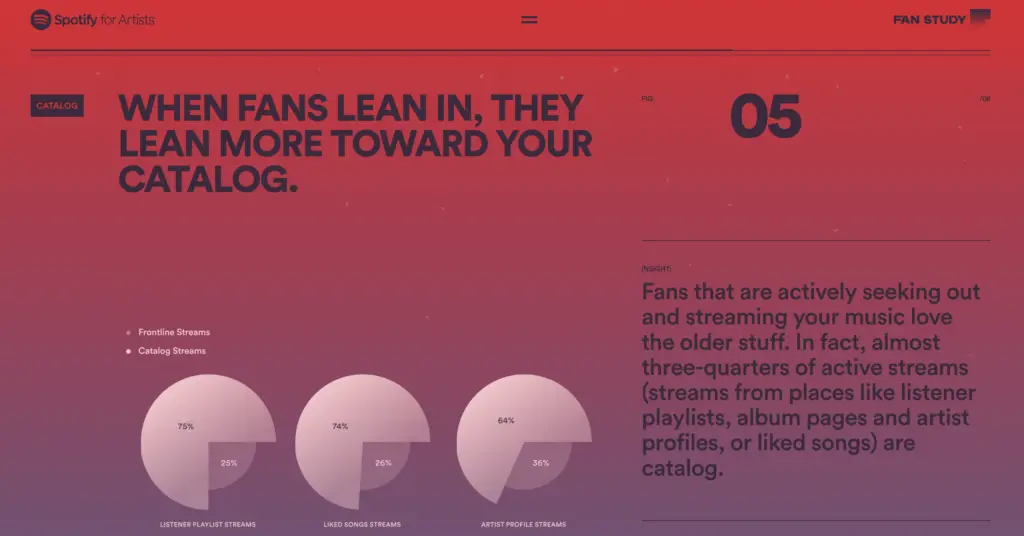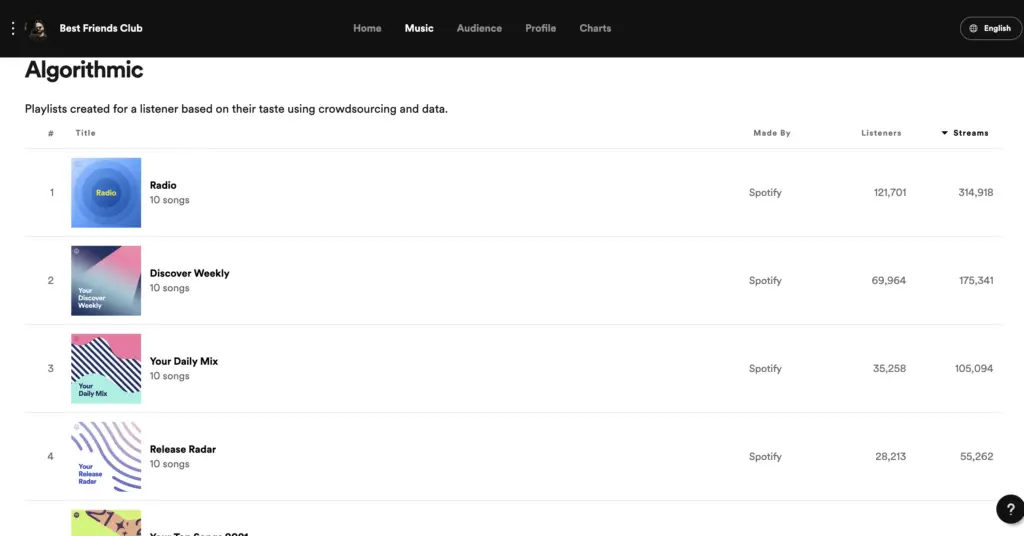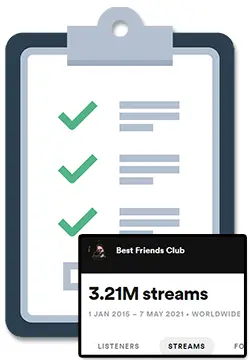In this article, you will learn the 3 main reasons that your Spotify catalog is SO important to your overall Spotify artist profile (and how you can optimize your catalog to grow your streams).
Your Spotify catalog is simply all of the music that you have available for fans to listen to on Spotify. Each time you release a new song on Spotify, your Spotify catalog grows.
A recent study conducted by Spotify revealed that the majority of streams are made by fans digging into an artist’s back catalog as opposed to listening to brand new releases and the songs at the top of an artist’s Spotify profile:

When a fan dives into your discography and goes through all your previous songs or listens to your older songs on playlists, that would be considered your “back catalog”.
However, it’s important to remember that a fan can also engage with your back catalog with Spotify algorithmic recommendations on Spotify algorithm playlists like Radio, Discover Weekly, and Your Daily Mix.
Learning WHY your Spotify catalog is so important will help you figure out HOW you can make the most out of your Spotify catalog. So…
With that in mind, let’s dive into the 3 reasons you can massively grow your streams by building your Spotify catalog, my friend. 🙂
The Bigger Your Catalog The More Music The Spotify Algorithm Can Recommend
Here’s a big plot twist that no one saw coming: the bigger your catalog, the more music there is for fans to discover.
However, it’s also important to remember that there is also more music for the Spotify algorithm to pick out and start recommending to other listeners through it’s many algorithmic playlists.
So it’s clear that both fans and the Spotify algorithm appreciate the back catalog.
As an artist, I think this is particularly important to take note of because:
When you can start tapping into algorithmic playlists like Spotify Radio and Discover Weekly, that’s when you can get a surprisingly high amount of streams.
Here’s an example of how many streams I personally get from these types of artists from my Spotify For Artists dashboard:

And for a deeper dive into this, check out this YouTube video that I put together for you:
…so what is the main takeaway here when it comes to this?
Obviously, the answer is to release more music – the more music that you have in your back catalog, the more that fans can go and discover your older songs, and the more songs that the algorithm can start pushing out.
The More You Promote Your Catalog The More Data The Spotify Algorithm Has To Use
The more that you actually promote your catalog, the more data that the Spotify algorithm will have to push out your music to more listeners and on different playlists.
It’s not just about the number of songs that you have in your catalog, it’s also the quality in terms of data points like streams, the number of listeners, the save rate, and the skip rate.
The more data points in that regard that the algorithm has to pull to make its decisions, the more that it will be able to start pushing out those back catalog songs to newer listeners today.
As a small way to illustrate this point, let’s compare the data from a song that I properly promoted against one that I had not promoted at all.
The main takeaway here is that you need to make sure that the Spotify algorithm has much data as possible to work with by properly promoting all of the music in your Spotify catalog.
A particularly good way to do this is by following a long-term release strategy that properly promotes your music as you release it.
However, there are also strategies and tactics you can follow to make sure your back catalog gets promoted properly as well…



